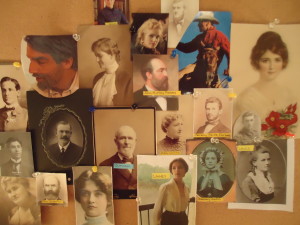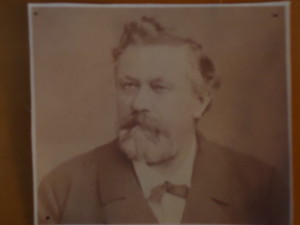 When writers brainstorm a story, their focus is usually on the main characters—who are they, what are their goals and motivations, what makes them tick, where are they going, and how are they going to get there? But more often than not, there are minor characters who fill important roles as well. Without them, the story would lack pizzazz and punch.
When writers brainstorm a story, their focus is usually on the main characters—who are they, what are their goals and motivations, what makes them tick, where are they going, and how are they going to get there? But more often than not, there are minor characters who fill important roles as well. Without them, the story would lack pizzazz and punch.
Sometimes a minor character can have a “speaking role,” or what we call “point of view.” If the character is important enough to the story, the reader gets to see at least part of the story through this secondary character’s eyes, even though they aren’t the hero or heroine. Their viewpoint is vital to the carry the story line. They are most often cast in the role of a friend or relative of one of the main characters, but occasionally, even an antagonist can be a POV character, especially in suspense novels.
Then there are what I call “wallpaper characters.” They are little more than props, and generally only appear in one or two scenes. Perhaps the heroine goes into a café for a cup of tea and a piece of pie. The waitress who takes her order is an older woman wearing a white apron. She is slightly stoop-shouldered, salt and pepper hair, and soft gray eyes. The heroine drinks her tea and leaves, and the reader never sees that waitress in the story again. But for a brief moment, the reader can “see” the waitress with the white apron in the café. She’s not just a faceless voice. The author could simply say the heroine ordered tea and pie. But inserting this very minor character for one paragraph serves to draw the reader more deeply into the scene and see what the heroine sees.
Some secondary characters have lines of dialogue and play the roles of those people the hero and heroine see and talk to on a regular basis—parents, siblings, co-workers, church people, neighbors. In real life, we don’t walk through our lives all by ourselves and neither do the main characters of a story. Having minor characters in the story give the main characters someone to talk to, relate to, someone with whom they become angry, or with whom she share a confidence. Minor characters can be a means by which we portray emotions in our main characters.
 The kind of secondary characters I like best are those who start out like an antagonist, but do or say something unexpected to change the reader’s mind. I recently finished writing a story that will release in October 2016 in which a gruff man with slovenly manners steps into the second chapter of the story and gives the hero a hard time. I named this character Otto. Otto is just a grumpy, hard-to-get-along-with kind of guy. When he leaves town for a while, the hero is left on his own. But when Otto returns, the reader expects him to throw the hero’s plans into turmoil. However, by the end of the story, the reader has discovered a different, unexpected side of Otto. Otto isn’t a main character, and even though he doesn’t have a POV, the reader still becomes acquainted with him through the eyes of the hero and heroine. Otto shows the reader that even people with salty exteriors can have sweet stuffings.
The kind of secondary characters I like best are those who start out like an antagonist, but do or say something unexpected to change the reader’s mind. I recently finished writing a story that will release in October 2016 in which a gruff man with slovenly manners steps into the second chapter of the story and gives the hero a hard time. I named this character Otto. Otto is just a grumpy, hard-to-get-along-with kind of guy. When he leaves town for a while, the hero is left on his own. But when Otto returns, the reader expects him to throw the hero’s plans into turmoil. However, by the end of the story, the reader has discovered a different, unexpected side of Otto. Otto isn’t a main character, and even though he doesn’t have a POV, the reader still becomes acquainted with him through the eyes of the hero and heroine. Otto shows the reader that even people with salty exteriors can have sweet stuffings.
Secondary characters can reinforce the story threads for the main characters, they can add a twist all their own, or they can simply be scenery along the way. Becoming engrossed in a story usually means establishing a connection with the main characters—the ones who “speak” to the readers. But don’t overlook the secondary characters. They can add unique seasoning to the story.





